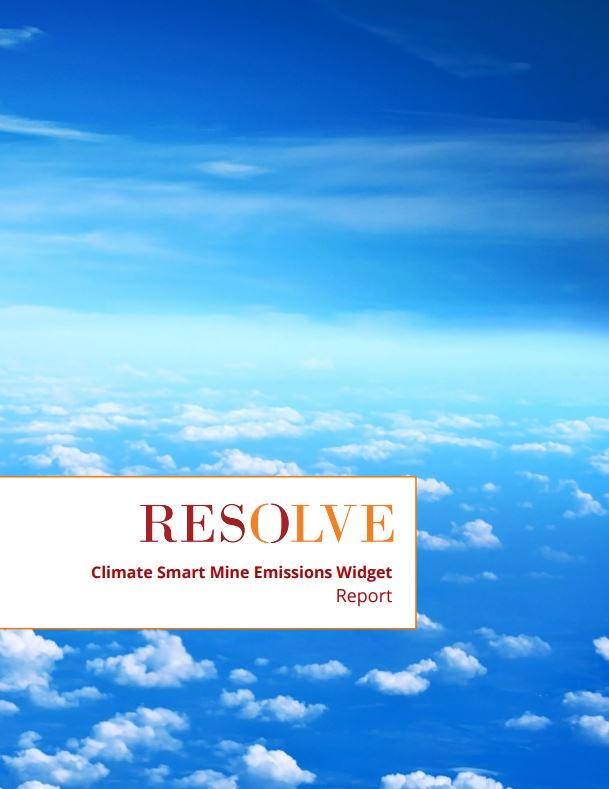Copyright© GIZ/Rolando Suana
01.10.2021 Communicating emissions in the extractive sector effectively - Introducing the Climate Smart Mine Emissions Widget
On the one hand, the world needs rapid reductions in greenhouse gas emissions to meet the Paris climate goals. On the other hand, the global energy and transport transition requires a variety of raw materials whose extraction and processing along the supply chain releases CO₂ emissions. For example, greenhouse gas emissions are released during the technical operation of mines, through deforestation and through the accompanying infrastructure expansions.
Many large companies have started to voluntarily implement sustainability standards. However, reporting on greenhouse gas emissions is difficult, as raw material supply chains are based on complex production processes distributed around the world. This system of global value chains leads to greenhouse gas emissions not only at the mine sites themselves, but also through cross-border transportation and during further processing.
This complexity is likely responsible for the vast variety of different standards and initiatives that are currently addressing carbon emissions monitoring and reduction at every stage of the supply chain. Furthermore, there is a large number of standards and initiatives in the mining sector which require different reporting of GHG emissions as well as setting of emissions reduction targets as RESOLVE noted in their 2019 research. This is problematic because the reported results are not comparable, making follow-up actions more difficult to implement.
To address this, RESOLVE has now developed a new open-source tool: the Climate Smart Mine Emissions Widget (External link). The widget (a type of supplementary module) assesses current standards for reporting GHG emissions in the mining sector against various norms. This enables alignment and consistency (keyword interoperability) between mining-related standards and climate reporting initiatives. This is intended to advance the efforts of mining companies, manufacturers and investors to reduce greenhouse gas emissions. The widget is not a new standard but can be added into existing sustainability standards.
The official launch of the Climate Smart Mine Emissions Widget took place on September 28, 2021. Dr. Sören Dengg, Head of the Department for Energy, Hydrogen, Infrastructure and Raw Materials of the German Federal Ministry for Economic Cooperation and Development (BMZ) opened the event and stressed the necessity of anchoring climate protection more firmly in the mining industry. This shows the importance of the new “widget”. After the official presentation of the widget by the NGO RESOLVE, representatives of Towards Sustainable Mining (External link) (TSM) and Newmont Mining (External link)spoke about their experiences in the concrete application of the widget. Afterwards, the sector program “Extractives for Development” (X4D) gave a short input on how the widget could support a strategy to align standards and interoperability.
On behalf of BMZ, X4D has supported the creation of the widget from the beginning. Consistent reporting on and reduction of GHG emissions in the extractive sector, helps resource rich countries to achieve their NDCs. This is a priority for the German development cooperation. The widget can also contribute to the achievement of the Sustainable Development Goals (SDGs) of the United Nations Agenda 2030 and establish responsible consumption as well as production patterns (SDG 12) and furthermore it can contribute to measures to combat climate change and its impacts (SDG 13). The Climate Smart Mine Emission Widget is a good example of how to balance reporting on other topics, such as FPIC or biodiversity, across the many standards and initiatives.
For any further questions please reach out to rohstoffe@giz.de.
Further information on the topic:

